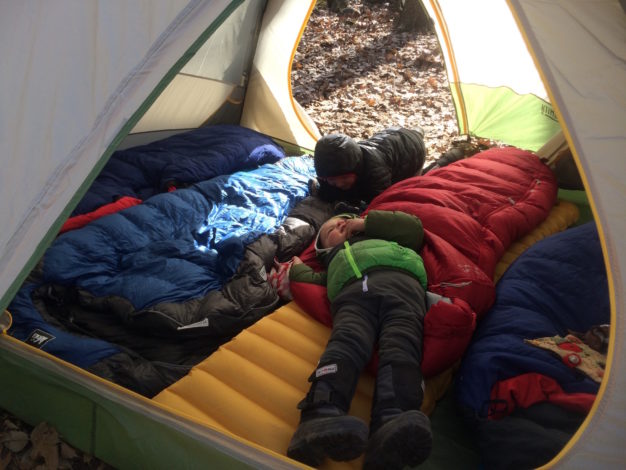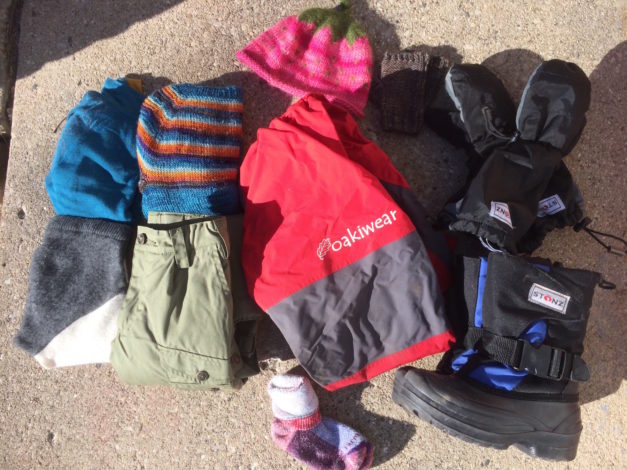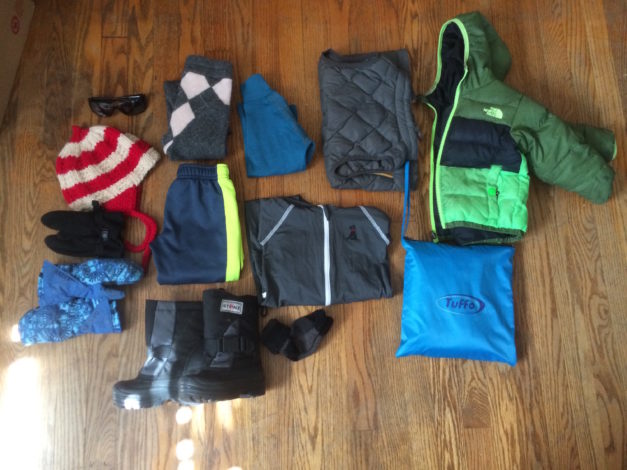Love the Layer You're in: Cold Weather Camping
I learned early to layer in the winter. Growing up, I was always cold. Our house was drafty and we played outside a lot in winter. I would always ask my parents to turn up the heat. My father would promptly ask me how many layers I had on. If it was less than three, the answer was a guaranteed no.
Now that I'm a parent, I totally get the layering question. Each kid is different and will need a heavier or lighter layer based on how well they retain heat, but ultimately, layering makes it easy to adjust for each day. Layering also makes my camping experiences so much more pleasant. We camped in early March this year in Wisconsin and IT was COLD! But we were able to make it work with our layers.
 We love our down sleeping bags and utilize insulated Air Core pads to prevent our body heat from sinking into the ground.
We love our down sleeping bags and utilize insulated Air Core pads to prevent our body heat from sinking into the ground.
 Graham's Layers: wool first layer, wool and insulated pant mid-layer, trail suit as outer layer
Graham's Layers: wool first layer, wool and insulated pant mid-layer, trail suit as outer layer
 Warren's layers: wool first layer, polyester and down mid layer, down top layer, and trail suit to cover it up.
Warren's layers: wool first layer, polyester and down mid layer, down top layer, and trail suit to cover it up.
 We love our down sleeping bags and utilize insulated Air Core pads to prevent our body heat from sinking into the ground.
We love our down sleeping bags and utilize insulated Air Core pads to prevent our body heat from sinking into the ground.
Base Layer
This is my top pick for where to put wool though you can find wool clothing in all the available layers. My main reason for this is that the wool layer next to skin prioritizes wicking moisture away to keep you warm. With kids who sweat less than adults, wool next to skin is a super soft "jammie" type feel. The nice thing about wool right now is that you have A LOT of brand options for wool layers. Brands made in the U.S. are Chasing Windmills and Ella's Wool. Brands from Canada are Simply Merino. And wool clothing made in Europe are Amamaya, Green Rose Merino, Polarn O Pyret, Disana and Janus. Nui Organics also has a kids' wool range. As a bonus, I've been able to find wool socks on Amazon for pretty reasonable, even down to the small sizes. If you're looking for a synthetic layer, you have bamboo or polyester and fleeces. Boody, Terramar, Patagonia and REI all have base layers for kids. For those who have a Costco membership, the 32-degrees Heat base layers are a good option too. These layers are great for those who have sensory issues or are allergic to wool. When we are cool-weather camping, our base layers are often our sleeping layers. It makes it easy to take off our mid- and top layers and slide into the sleeping bag instead of having to get all chilly. Graham's Layers: wool first layer, wool and insulated pant mid-layer, trail suit as outer layer
Graham's Layers: wool first layer, wool and insulated pant mid-layer, trail suit as outer layer
Mid Layer
The mid layer's main goal is heat retention. You want to create a nice air pocket where all the warmth that your kiddo's body is producing is kept. You can opt for a fleece, wool or down layer here. Once again this will depend on your kiddo and your budget. A lot of kids do great with a fleece mid layer. For those with infants, this is a perfect place to use a single piece fleece-style footie pajama (like from Carter's.) Here is when you can add an additional layer and opt for a 4-layer system. I find this helpful if it's going to be super cold or if we're going to be going in and out a lot. I'm also a huge fan of vests as a mid layer because it allows for more movement. Though my husband says I'm wearing my life preserver (Back to the Future), he's right in that it definitely makes me more likely to joke around instead of grumble about the cold. Additionally, a lot of children's winter jackets pull double duty as a mid and top layer. Warren's layers: wool first layer, polyester and down mid layer, down top layer, and trail suit to cover it up.
Warren's layers: wool first layer, polyester and down mid layer, down top layer, and trail suit to cover it up.
Top Layer
This is your element repellant system. I'm especially fond of the 3-in-1 jacket that allows me to be comfortable. You have a lot of zip-in options with the 3-in-1 from down to fleece liner. The top layer is also where you'll find us using our trail suits. On a recent backpacking trip, the kids were dressed in a wool base layer, down puffys and their OAKI suits. This made clean-up a breeze (just wipe the trail suit off and it's good to go).Accessories
Don't forget your hats, mittens and buffs! Both my 3-month-old and 3-year-old wear wool beanies at night because they either don't generate enough heat or they squirm out of their sleeping bag. (Three guesses who's who.) Light-weight fleece gloves allow for kids to still have finger dexterity and can be placed inside larger waterproof mittens. We'd love to hear how you layer in the colder temps. Please share in the comments below!Read more:
Photos by Heidi Schertz. Feature photo by Kristin Hinnant.Related Content




Comments